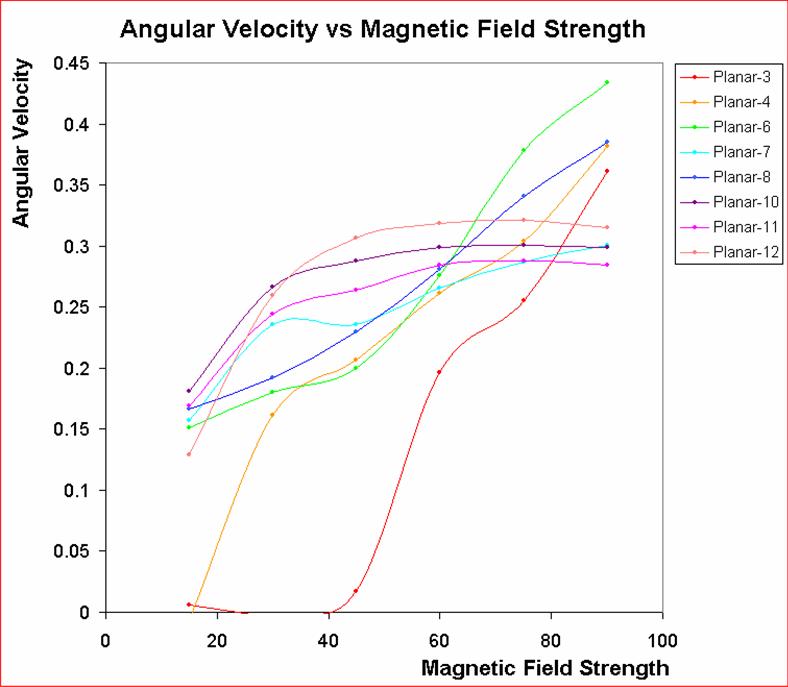3.2 - Angular Velocity Saturation
It was shown from chapter 2.1 and 2.2 that for
planar-2 and -3 clusters, unless the magnetic field strength is above a
certain threshold amount, or else the cluster would not initiate rotation. And
in general, the angular velocity of the cluster with small number of particles
increases as the magnetic field strength increases. This is shown by the phase
surfaces in chapter 2.2 where they were steeply conic. However, for cluster
with relatively large number of particles such as planar-10, the angular
velocity saturates even when the magnetic field increases. This is shown by
the almost cylindrical phase surface diagram of planar-10. This saturation
effect becomes more obvious if we examine the average angular velocity as a
function of magnetic field strength. (see figure 3.2.1).

-
Figure 3.2.1 - Average angular velocity versus magnetic field strength.
The angular velocity was averaged over all the particles in that particular
cluster at that magnetic field strength. In general, the angular velocity
increases as the magnetic field increases for cluster with small number of
particles. But angular velocity saturates even when magnetic field was
increased for planar-10, -11 and -12 clusters. This visualization is drawn
using Microsoft Excel XP.
The reason for this angular velocity saturation
effect was unclear. One possible explanation is if there were irregularities
in the electric potential well as proposed in chapter 3.1, then there would be
a change in the direction of electric field (since E = dV/dr). Hence the inner
ring and the outer ring of the cluster would rotate opposite to each other.
The actual theory is beyond the scope of this project so it will not be
explained here.

